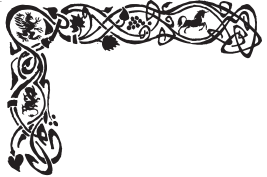







From HB121, the line I'm taking is that Annabella represents modern reasoned logic (head); Augusta represents the pre-modern lusts (body); Byron represents primeval rhythm (psyche).
His poetry is both romantic and revolutionary, almost the same revolution that sprang up in the 60s; the revolution that agrees with Rousseau that Man is happy in nature.
In Byron this takes the form of brooding misanthropy (not unlike Paul Kantner, actually). The obvious question is, why did both revolutions fail. Or, why is the trend of advance on the opposite direction?
The answer given in Pictorial 111, Pictorial112 was that there has been a "switch" of the universe from organism to machine; from the body (action) to the head (passivity, ego).
This switch started with Galileo, and has been going on since, becoming total (see the expressive algorithm passim). Ada Lovelace (Byron's legitimate daughter, see HB121) unwittingly represents that switch, in that she couldn't have known then what the future held.
Byron's lineage, though, was still very finely balanced between poetry and science. Ada's daughter, Lady Ann, went the other route by investing in the prime of Arabian equestrian stock; and her daughter, Judith, carried on the family tradition.
At this point you might ask; what's all this about lineage? Just that sometimes a family is at the centre of a conflux of history; the time and place (England and the industrial revolution), plus the ancestry of that family.
When Byron (a polyglot mix of Scottish royal and debonair sailor) married Annabella Milbanke, he chose to cross-fertilize with an exceptionally brilliant mind and mathematician. The result was Ada and her line, and that is history!
Now you're gonna say, why say "cross-fertilize"? Just that I want to emphasize the rhythmic aspect of the "facts". Since Darwin we've been told that life is a competition, and nothing about how these multiple rhythms that we see in nature come about.
Watching birds, gulls have their own rhythm of aerial combat, pigeons have their ground-nesting one, eagles their soaring one, vultures slightly different, owls a tree-inclined one.
Where do all these come from? I happened to read in the paper that Limahl of 80s band Kajagoogoo had corrective laser eye-surgery that went wrong, and the oil gland that moistens the eyes, so that tests don't evaporate, no longer functions.
Now, how is that supposed to develop by competition within a species (or between)? It's not competition; as noted in Hyborian Bridge 119, Darwinism occupies the same straight-line universe as the rest of science, a universe where there is no primeval rhythm.
This primeval rhythm is what a poet like Byron sees and comments upon ("the sun sets opposite the moon"). It's a priori because it's not factual.
The competition in the primeval universe is a physical one (the fantasy pulp universe, basically). The physical universe is dependent on primeval rhythm for its active state.
That was the eyes; another example is the throat. You breathe through it, swallow, sing, sneeze. All these are primeval rhythms (autonomic even if trained) that enable us to express, and then maybe compete. The ear with its shell-like shape is another example (see Moebius, L'homme est-il bon? from Metal Hurlant).
With primeval rhythm comes a type of meaning that the body joins a tapestry of wriggling natural forms, and recycles the material in the process of decay, then rebirth.
Only rhythm can revive from decay because it is a cosmic aspect of creation/destruction. Physical style is unthinking; birds occupy their bodies and dance and sing. An algorithm (head) cannot revive from decay, it can only exist as illusion.
Algorithms are products of the head, and occupy s sterile order, or the Black Sun of illusory calculation (rockets to Mars). The "thinking" universe is a product of the head - or physical boredom - it is not the physical universe (of the unthinking body).
Do you see where this is heading? An eye is a perfectly rhythmical creation, or it couldn't function. The information scientists get is always going to be a product of rhythm.
There is no competition involved; zero. Any competition comes after the event (of creation). We live in a grand illusion (Wizards of the Black Sun, Noto's Red Sonja story) or logical fallacy. Creation is a cosmic event, whether you call it God or the Great Spirit.
I'm also reminded of Bollywood, in s way! Compared to the West, their physical style is unthinking and full of flair and fashion. It is somewhat similar to the Hollywood of yore, but even more dance-based or musical routine.
The western route is on a hiding to nothing because, without the movement of the body in work or play, the "facts" of the Black Sun are always approaching the vanishing point of technique (perspective, algorithms, ones and zeros).
A body is not perspective; it is balance and proportion. This is what's so wrong, because Darwinism becomes a perspective system, as opposed to one of physical competition (fighting between bodies, natch.)
Horses are the most miraculous creatures - even their snorts are cause for joy. They have at least four sublime rhythms - walk, trot, cantor, gallup - as well as the ability to leap.
This was the other route taken by Byron's lineage, the one at the polar opposite to algorithms. "Poetic science", Ada called her discipline. Retrospectively speaking, one can see now that poetry is always a forerunner and that, at that time (circa 1850), we had already entered a parallel system of straight-lines (sun, Galileo).
The physical sun is twinned with the moon in the sky; just as revival is twinned with decadence. Decadence, and the poetic temperament of romantic revolution; the miracle of horse-breeding.
Revival poetry, and there us a clear link here with Howard. For all his sombre seeming misanthropy, the poetry revives through physical descriptions that set the heart aglow (again).